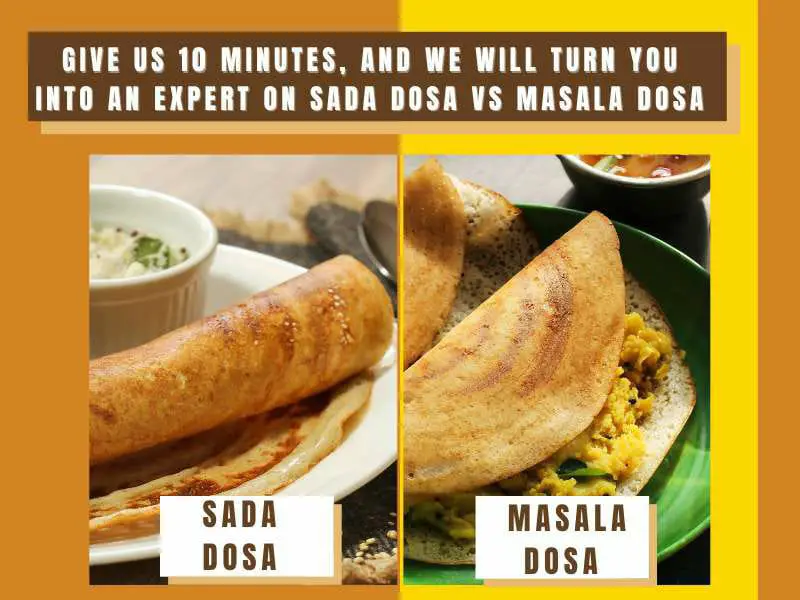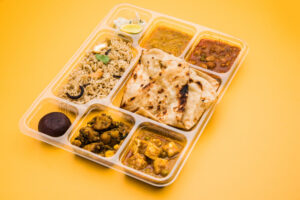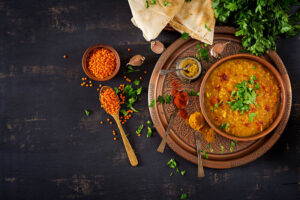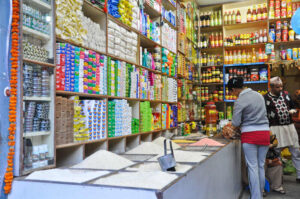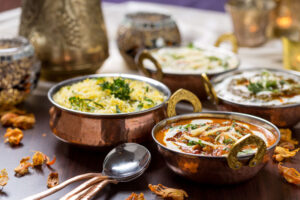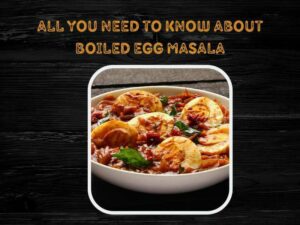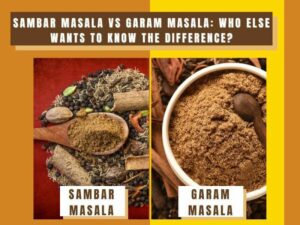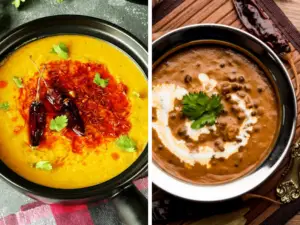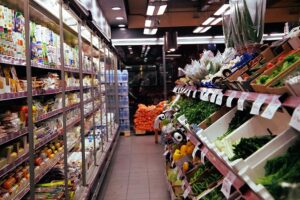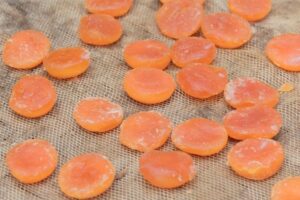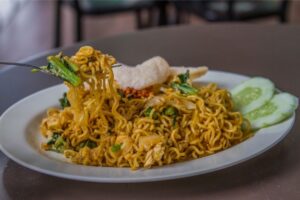Among the diverse South Indian cuisines is the range of dosas that have become popular globally. There are over 100 varieties of dosas prepared with different ingredients, fillings, etc. Let’s look at the comparison of sada dosa vs masala dosa.
What is Sada Dosa?
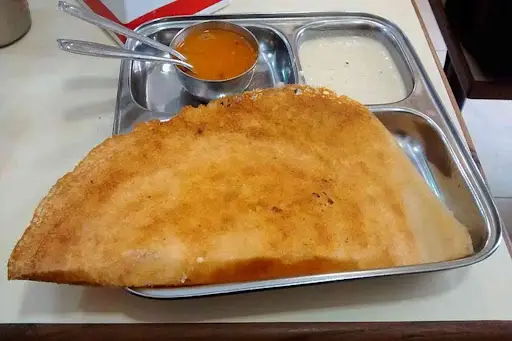
The word sada means plain or simple. Simply put, sada dosa is plain dosa that is served without any stuffing.
Sada dosa is a classic example of crispiness, served with chutney and sambar. Apart from the typical white coconut chutney, there are other varieties of chutney that can be served along, like tomato chutney, coriander chutney, etc.
What is Masala Dosa?
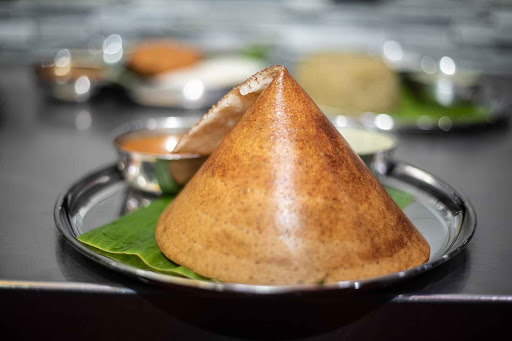
Masala dosa is a contemporary version of the traditional South Indian dosa.
Masala dosa is a contemporary addition to the traditional south Indian cuisine called the dosa.
— MapsofIndia.com (@MapsofIndia) September 10, 2020
If you love a masala dosa meal, and want to try, here is how to make it.https://t.co/WCtiI58VAF#SouthIndian #Food #Masaladosa #cuisine
This variation of Indian dosa is made from lentils, rice, fenugreek seeds, ghee, potato, and curry leaves. It is a crisp dosa with a potato filling.
Interestingly, masala dosa itself has a few varieties, including Mysore masala dosa. Read Mysore dosa vs masala dosa to know more.
Why is It Called Masala Dosa?
This dosa has a spicy potato masala filling before it’s folded and served. Owing to the filling, which isn’t there in a plain dosa, it’s called the masala dosa.
Perhaps you’d also like to read about paper masala dosa vs masala dosa.
Sada Dosa vs Masala Dosa: Are They Similar?
While the dosa base itself is pretty similar, the significant difference between plain dosa vs masala dosa is the potato filling of masala dosa.
As for similarities, you could use the same batter for both these varieties of dosa.
What is the Difference Between Sada Dosa and Masala Dosa?
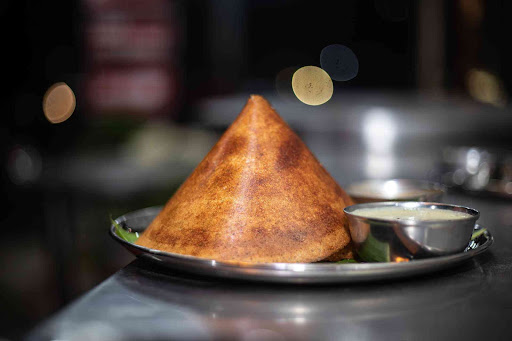
As mentioned earlier, the major difference between sada dosa and masala dosa is the potato filling of masala dosa, while sada dosa is just plain.
Sada Dosa Recipe
To make crispy, golden plain dosas, here are the ingredients you’ll need to make the dosa batter:
- 3 cups rice (preferably dosa rice)
- 1 cup urad dal (black gram)
- 1 cup beaten rice (thin poha)
- 1/2 tsp fenugreek seeds
- salt to taste
These ingredients are available when you order Indian groceries online. Here’s how you need to prepare the batter:
- Soak the rice, black urad, and fenugreek seeds separately in sufficient water for about 5 hours.
- Drain the water and grind the rice to a smooth batter. Add one cup of water or less to make a smooth paste.
- Transfer this to a large vessel.
- Next, blend the black urad into a smooth, fluffy batter.
- Add the beaten rice and fenugreek seeds, and blend them into a smooth thick paste.
- Transfer this batter to the same vessel and mix well.
- Let this ferment for about 12 hours or overnight. A well-fermented batter will raise well.
To make sada dosa using this batter, here are the steps you need to follow:
- Mix the batter well. Take the required amount of batter into a bowl and add salt to it. Mix well.
- Take a non-stick pan or griddle and place it on medium-high heat.
- Pour a ladleful of batter onto the pan. Spread it in a circular motion from the center to the edges.
- Smear a few drops of oil over it.
- Cover and cook the dosa for a minute till the dosa’s bottom turns golden brown.
- Fold over into a semi-circle or roll and serve immediately with sambar and coconut chutney.
Here’s a video showing how to make sada dosa (plain dosa).
Masala Dosa Recipe
The sada dosa batter can be used for masala dosa as well. The potato masala mix needs to be prepared separately and added once the dosa is ready before folding it and serving.
Here are the ingredients you’ll need to prepare the potato filling:
- 2 – 3 tbsp oil
- 6 – 7 curry leaves
- 1 tsp black mustard seeds
- 1/2 tsp cumin seeds
- 1/4 tsp asafoetida
- 2 onions (finely chopped)
- 6 – 7 medium-sized boiled potatoes (mashed)
- 1 small bowl of green peas
- 1/4 tsp turmeric powder
- 1/4 tsp chili powder
- 1/2 tsp dry mango powder
- 1/2 tsp garam masala
- salt
To prepare the potato masala filling,
- In a frying pan, heat 2 tbsp oil and add the mustard seeds.
- Once they start spluttering, add the cumin seeds. Fry till the color changes to a golden brown.
- Add in the curry leaves and fry for about 10 seconds.
- Put in the chopped onions. Saute till they turn soft and translucent.
- Add the red chili powder, turmeric powder, dry mango powder, garam masala, and salt. Saute until the oil releases from it.
- Put the mashed potatoes and green peas into the pan. Give it a good mix. Sprinkle a few drops of water for a mushy texture.
- Garnish with coriander leaves.
Here’s a video showing how to make masala dosa (a South Indian breakfast recipe).
Is Sada Dosa Healthy?
A single sada dosa contains about 104 calories. This varies based on whether you use oil, butter, or clarified butter to make the dosa.
While the urad dal (black lentils) are a good source of folic acid, fenugreek seeds benefit the heart and reduce blood cholesterol levels. In addition, rice is an excellent source of complex carbohydrates, suitable for generating energy in the body.
Using clarified butter (ghee) to make the dosas provides Vitamin A, Vitamin E, and Vitamin K, which are antioxidants. It provides high-quality fat for the brain and body. However, too much of it could result in increased cholesterol levels.
Overall, people with diabetes, heart ailments, overweight individuals, or those watching their weight must consume this in moderation.
Sada Dosa vs Masala Dosa: When Are They Eaten?
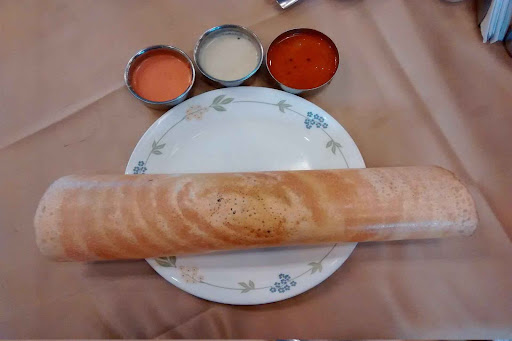
Typically, both sada dosa and masala dosa are famous breakfast dishes. However, dosas are a versatile dish and can be had for breakfast, lunch, snacks, or dinner.
It’s easy to digest and keeps you adequately full. A dosa with stuffing in it, like the masala dosa, can make a complete meal, with its sides of sambar and coconut chutney.
Is Masala Dosa Unhealthy?
A single masala dosa contains at least 387 calories, and in addition to the benefits and drawbacks of sada dosa that apply to masala dosa as well, the additional potato filling makes a lot of difference.
Although it’s still a decently low-calorie, nutritious meal, it is best consumed in moderation. The potato filling drastically increases the carbohydrate content of masala dosa.
According to nutritionist Neha Chandna, “Dosa is a great source of complete protein for vegetarians as it is made of rice batter and urad dal (black gram lentil) and completes the amino acids in them.”
If you liked this comparison of sada dosa vs masala dosa, you’ll probably like naan vs paneer naan too.
